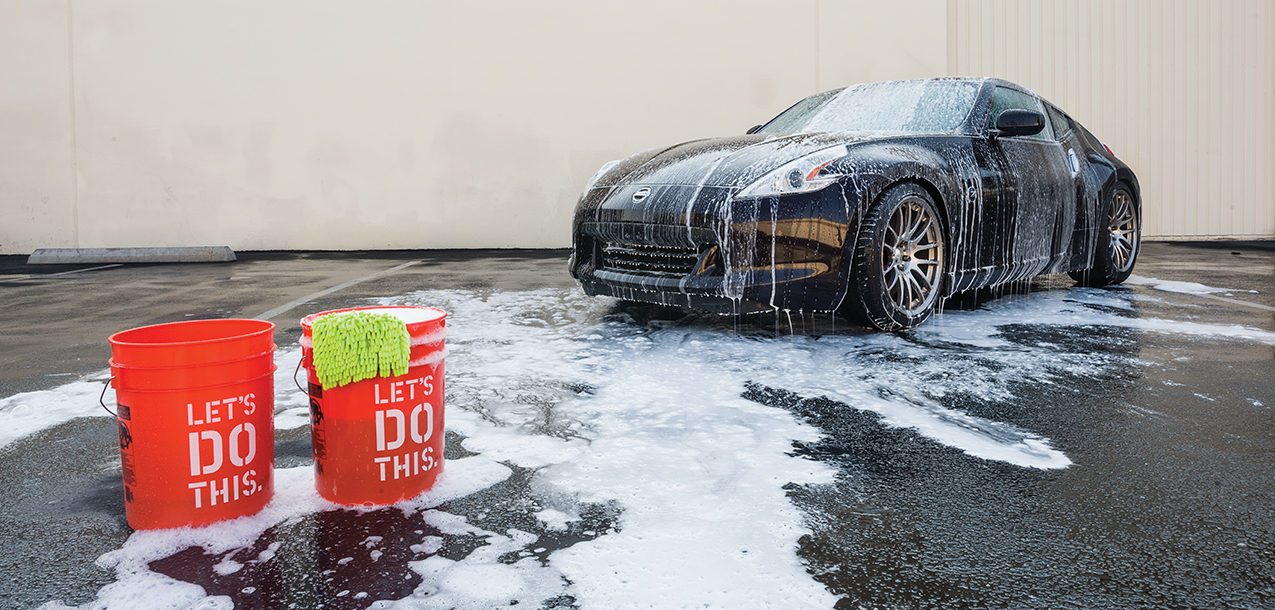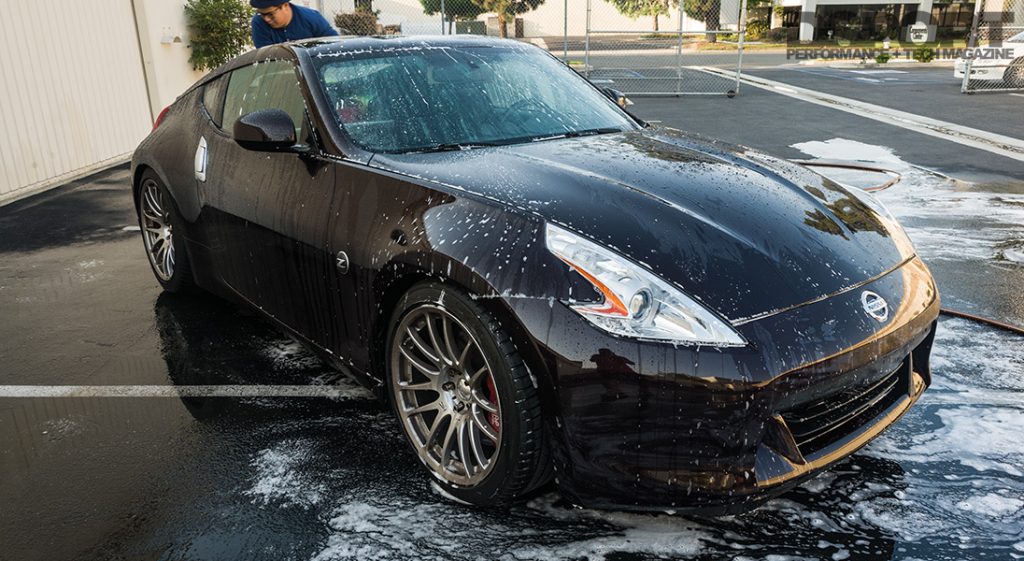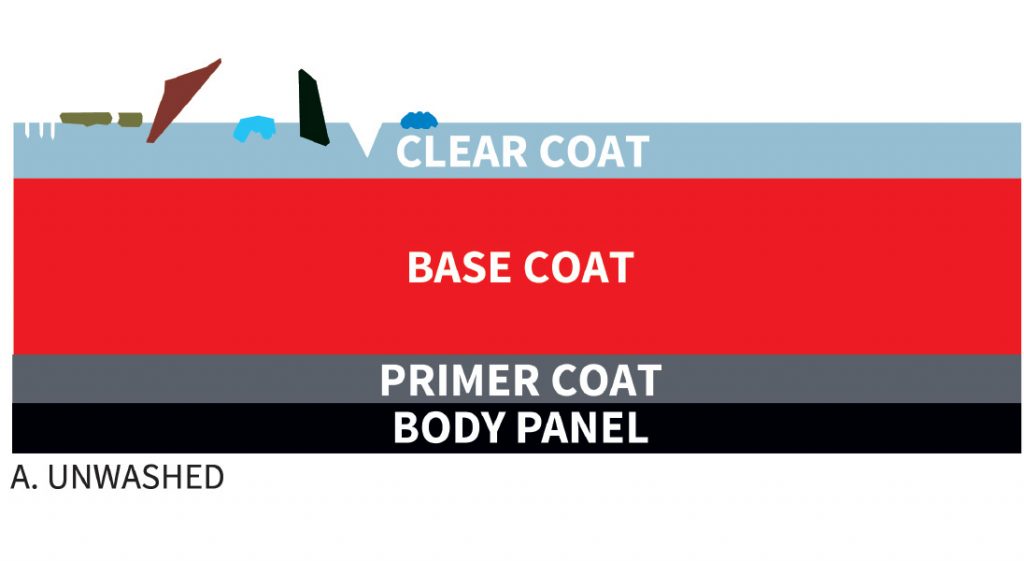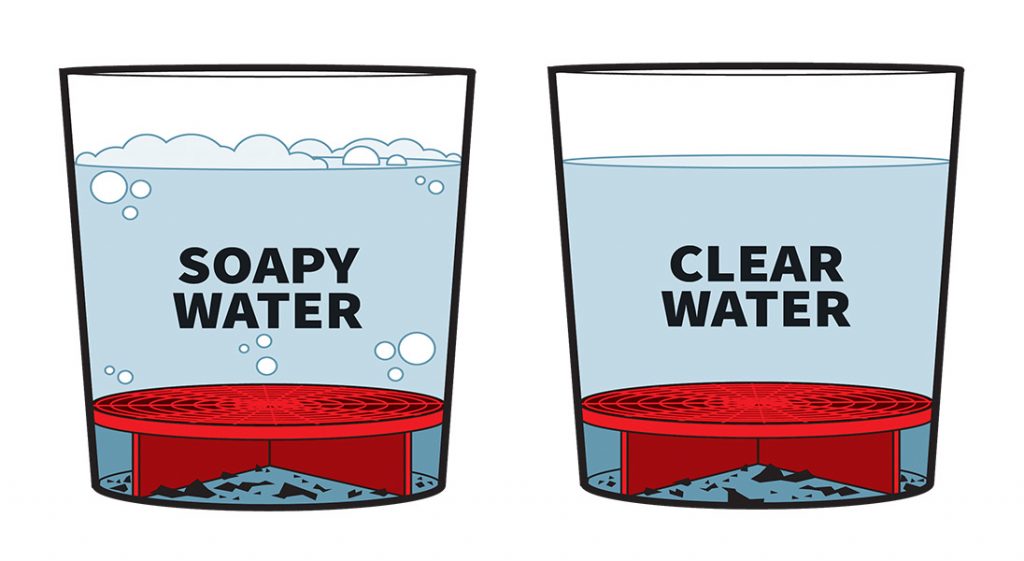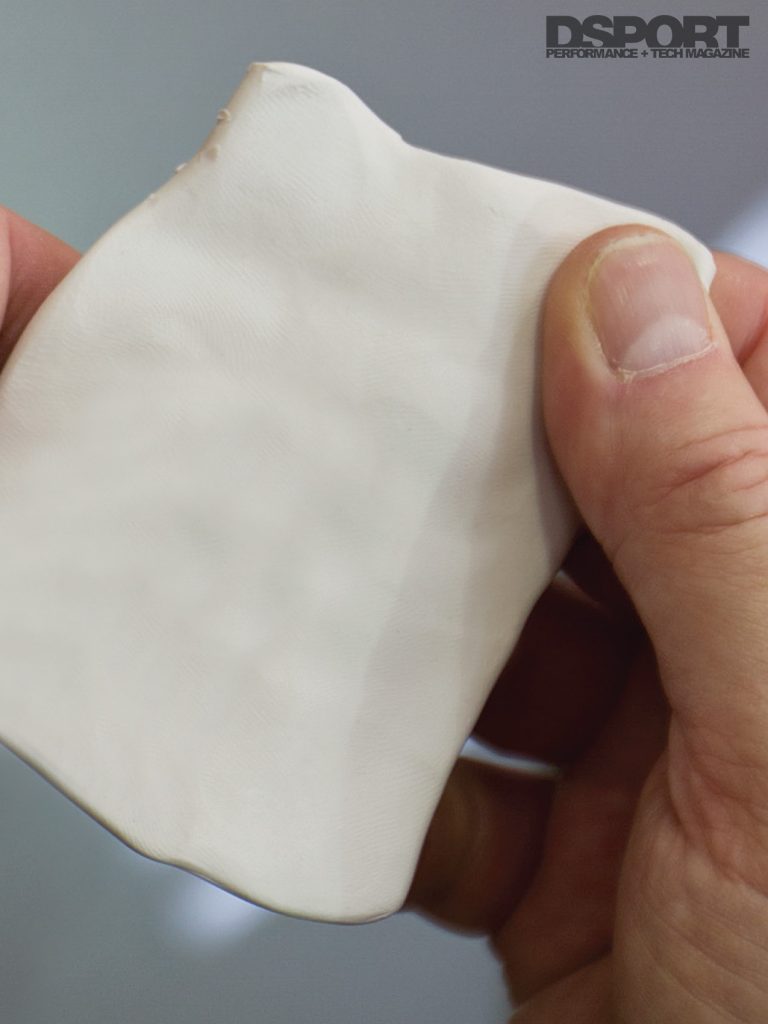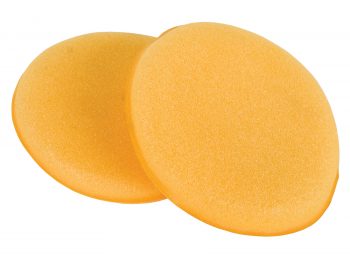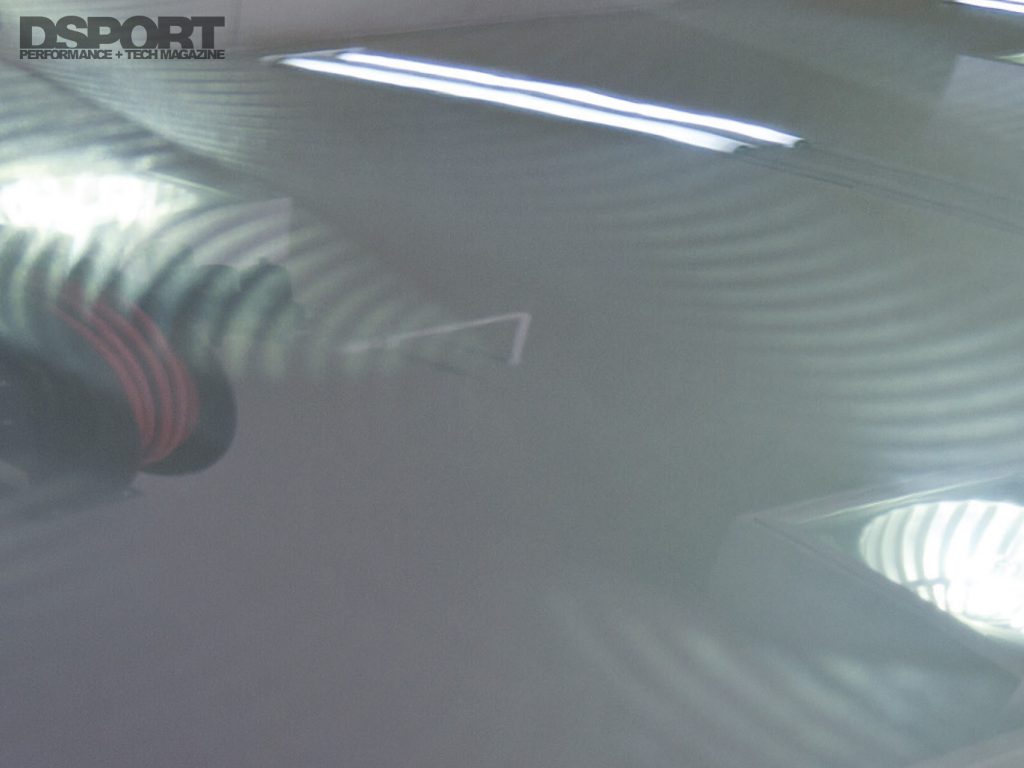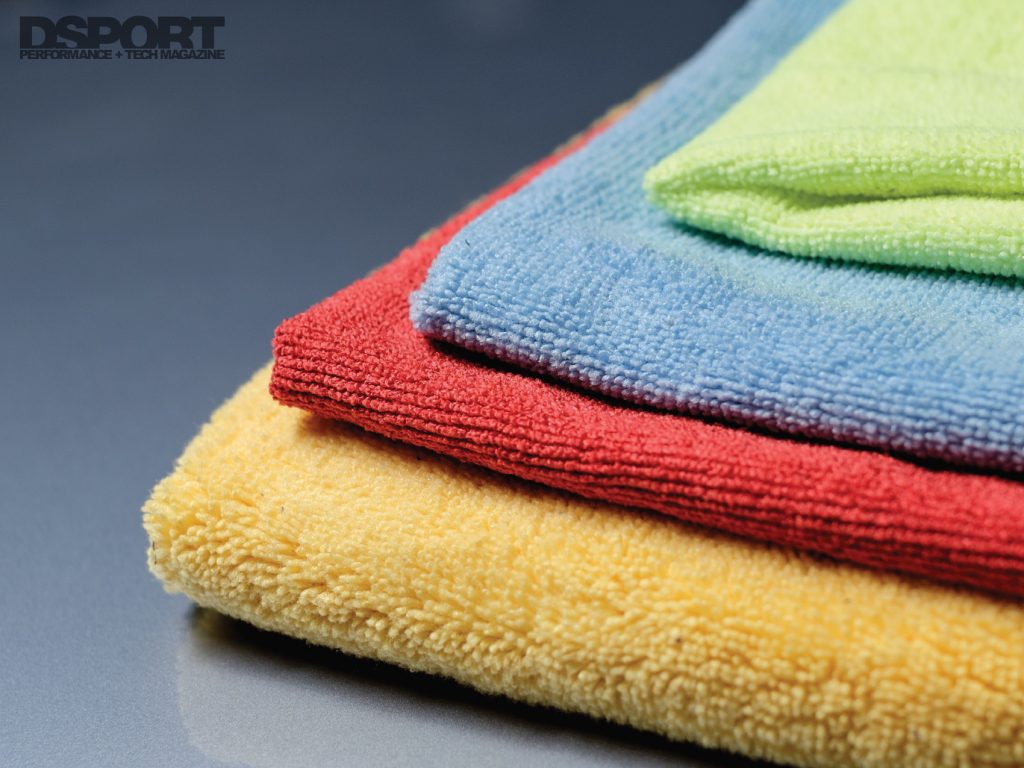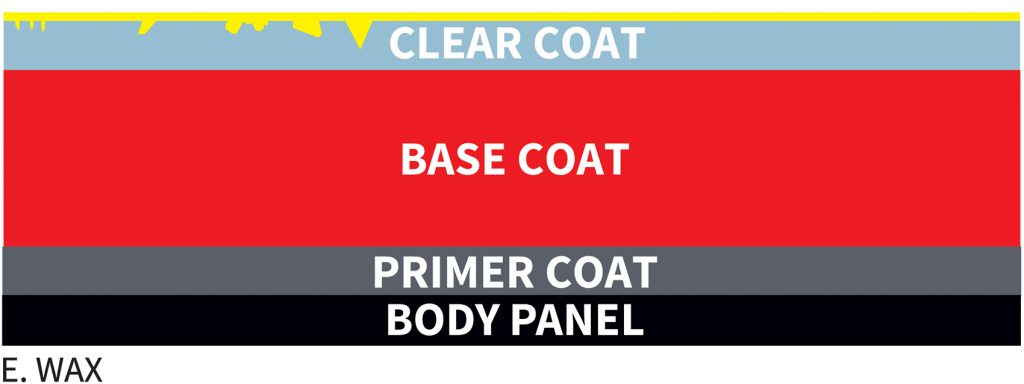If you’re reading this then you aren’t normal. In fact, you’re probably abnormal in the sense that you care about you car way more than the average person. But why wouldn’t you? You dedicate your time and money to getting the most from your car. Whether it’s horsepower or handling, your car is most likely getting the best of the best in terms of performance components. So why do some of us neglect to make sure our cars look their best? If you simply don’t care if your car has a clean and shiny appearance, well there’s not a whole lot we can do for you. But if you just don’t know how, then we’re about to solve that problem.
By Sami Sharaf and Jun Chen
DSPORT Issue #172
A Clean Slate
When it comes to caring for your car’s paint, the first step is to wash the exterior surfaces to remove any loose contaminants that may be on the paint surface. Start by parking your car in the shade and waiting for the paint surface to be cool to the touch, this will help to reduce water spots. Begin the actual washing process with a thorough rinse to remove any dirt and debris from the surface. This step is actually extremely important because any particles left on the paint after the initial cleaning will eventually be rubbed into the finish.
From there, you’ll want to clean the vehicle with a high-quality wash solution. Never use household soaps as they can strip any protective layers of vital oil and wax from the paint and subsequently accelerate oxidation. Most quality care washes are pH balanced and non-detergent in composition. Once the proper wash-to-water dilution has been achieved in a clean bucket, you’ll want to apply the wash liquid with a clean washing mitt. There are several options for wash mitts with the most common constructed of natural materials such as lambswool. Some professionals prefer synthetic mitts made of microfibers, while some will even use grout sponges such as the ones available at the hardware store. Whatever you choose, remember that the objective is to gently wipe away any loose contaminants from the surface while using as little abrasion as possible.
Once the wash and rinse process has been completed, dry your vehicle in a timely manner to avoid water spotting. If the water used is extremely hard, minerals in the water will be left on the paint surface. A properly selected drying towel is imperative for this step. Keep in mind that you’ll want something that is soft and gentle on the paint but can absorb efficiently. Microfiber and chamois drying towels are the most popular options to quickly and safely dry your car. Most car care product manufacturers recommend that you wash your car once a week.
TWO BUCKETS ARE BETTER THAN ONE!
During the washing process, use the two-bucket method. This method dedicates one bucket for the wash solution and one bucket with just plain water for rinsing the wash mitt. By washing one section at a time then rinsing the wash mitt in the rinse bucket before moving to the next section, you’ll avoid rubbing contaminants into your paint, which can cause swirls and scratches. To take this precaution one step further, use an insert (such as Grit Guard or Scratch Shield) in the bottom of the bucket that will help trap debris in the bottom of the bucket and away from the washing mitt.
Break the Bond
Once the exterior surfaces have been washed, rinsed and dried, you’ll be able to evaluate the finish of the car to see if there are any remaining contaminants, which can be felt or seen or both. Obvious surface contaminants are due to your vehicle being exposed to the elements such as tree sap, bird poop, fallout, overspray or tar. Below these surface blemishes can be swirl marks, oxidation, chemical stains or scratches.
(Above) Clay bar is one of the best advancements in modern car care. With proper lubrication (either spray detailer or simply soapy water), a clay bar can remove bonded contaminants from paint and even other surfaces like glass.
(Below) On the left,we have a new, clean and kneaded piece of clay bar ready to pick up paint contaminants such as iron particles, tree sap, and more. On the right, we have a mildly used clay bar with some embedded contaminants.
The process to remove these contaminants involves using a clay bar. Starting with a new piece of clay bar, knead and flatten the clay into a piece about the size of your palm. Spray the manufacturer’s recommended lubricant on the surface of the vehicle and slide the clay bar back and forth with light pressure to pick up any bonded contaminants. You should be able to tell a difference right away as a rough surface will begin to feel much smoother. Work in small sections at a time and fold and knead the clay bar often. This step can be time consuming but thankfully it is only recommended every six months or so. Once you’ve clay barred the entire vehicle’s paint surface, some professionals recommend that you wash the vehicle once again.
TIP: THE RIGHT TOOL FOR THE JOB
Polish and wax should only be applied with the proper applicators to avoid scratching the paint finish of your car. Typically, manufacturers of car care products include soft foam applicator pads. These ultra-soft applicators are usually washable and reusable.
Spit & Polish
To get that high gloss finish, you’ll want to polish the paint on your car. It’s important to note that most polishes do not remove contaminants nor do they add a protective layer, so this step is not a replacement for the clay bar or wax process. Using a dedicated polishing cloth or terry cloth towel, apply the polish to your paint and begin to work it into the paint with overlapping forward and back, left and right movements. Concentrate your efforts in small sections at a time; usually accomplishing one panel at a time is a good approach.
Polishing the paint helps level a clean (and properly clay barred) paint surface to reduce the visibility of scratches, swirls and other imperfections.
TIP: IT’S ALL IN THE DETAILS
Use blue painter’s tape to mask off all rubber and plastic components when waxing or polishing. Some waxes and polishes can permanently discolor these materials. Once the waxing and polishing steps are complete, remove the tape before it can leave an adhesive film. In addition, excess wax that gets caught under emblems, between panels and/or weatherstripping can be gently removed with a cotton swab or soft toothpick.
Feel Before You Buy
Microfiber towels have completely changed car care for both DIYers and professionals alike. Don’t go out and stock up just yet because not all microfibers towels are cut from the same cloth. Look at these two qualities: the “plushness” of the towel, measured in grams per square inch (GSM) and the blend of polyester/polyamide. A decently plush, good all-around towel will likely have a 70/30 blend with ~300gsm.
Wax On Wax Off
Now with a defect-free, deep gloss finish, your car’s paint surface is ready to be sealed. This step will help protect the finish by locking in the good stuff and keeping the bad stuff out. Either a sealant or a wax can be used. The difference between the two is that sealants are synthetic polymer-based products while waxes are naturally derived (commonly from carnauba). To apply, follow the manufacturer’s recommendation for amount and applicator. The typical instruction is to apply a thin layer of wax in a non-humid, moderate-temperature environment. Then the wax needs some time to cure before wiping off the excess with a microfiber or terry cloth towel. Unfortunately, the protective properties of sealants and waxes do not last forever. With that said, you’ll want to redo the polish and wax process at least every six months (after you repeat the clay bar process) or more often.
Step & Repeat
With regular car washes, you’ll be able to complete a visual and tactile inspection of your paint often. If the reflections in your paint aren’t crisp and sharp or the finish becomes rough, you’ll want to run the entire process again. You might find that a bit of trial and error will be needed to find the best solution for your specific paint finish. Try different products or techniques but make sure you communicate with the car care product manufacturers. They will be able to offer the best advice for their products and even for your specific car. Keeping up with your car care will ensure your car is looking its best. Shine on.


